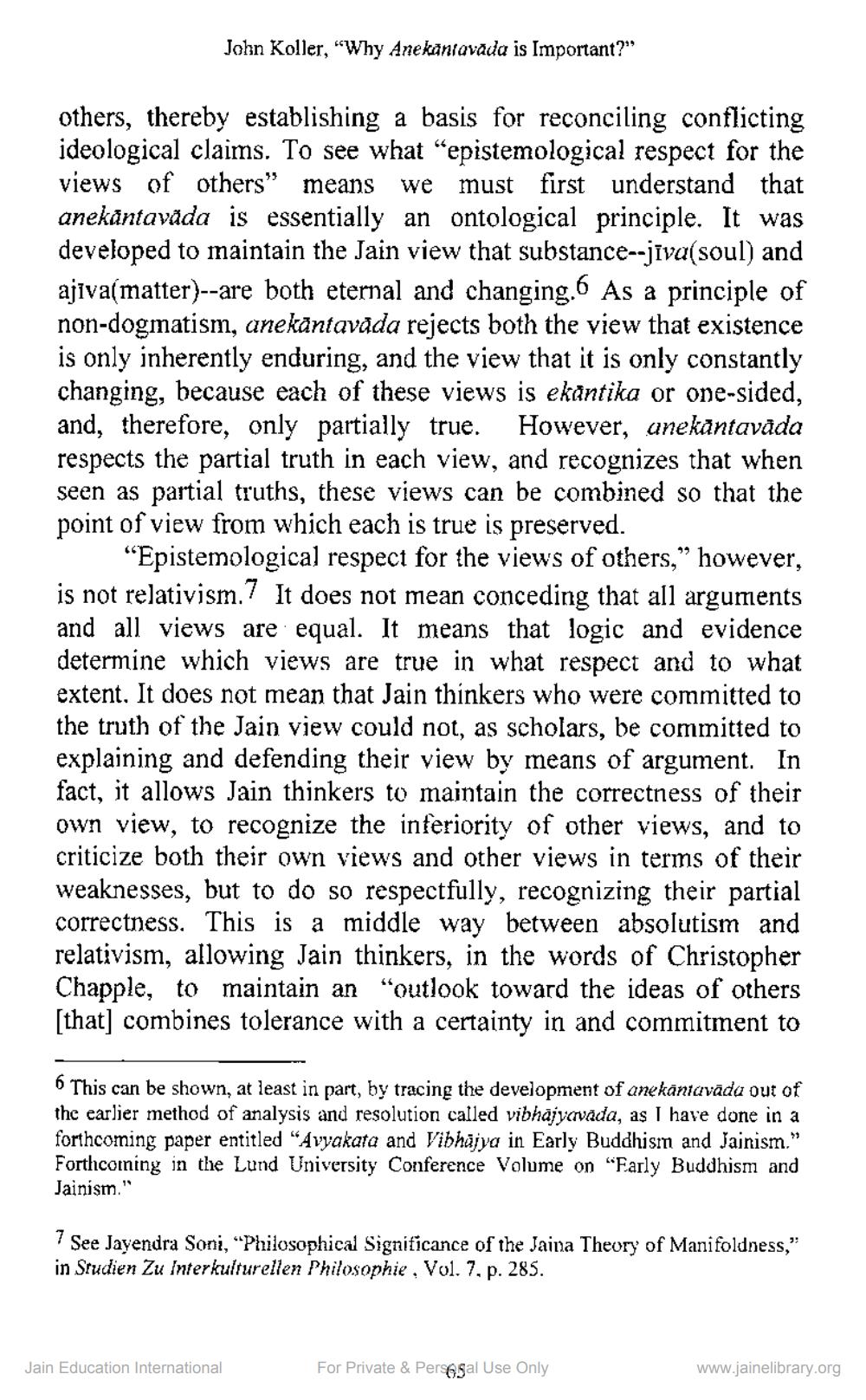Book Title: Why is Anekantavada Important Author(s): John M Koller Publisher: Z_Lessons_of_Ahimsa_and_Anekanta_for_Contemporary_Life_014006.pdf View full book textPage 4
________________ John Koller, "Why Anekantavada is Important?" others, thereby establishing a basis for reconciling conflicting ideological claims. To see what "epistemological respect for the views of others" means we must first understand that anekantavada is essentially an ontological principle. It was developed to maintain the Jain view that substance--jiva(soul) and ajiva(matter)--are both eternal and changing.6 As a principle of non-dogmatism, anekāntavāda rejects both the view that existence is only inherently enduring, and the view that it is only constantly changing, because each of these views is ekantika or one-sided, and, therefore, only partially true. However, anekāntavāda respects the partial truth in each view, and recognizes that when seen as partial truths, these views can be combined so that the point of view from which each is true is preserved. "Epistemological respect for the views of others," however, is not relativism.7 It does not mean conceding that all arguments and all views are equal. It means that logic and evidence determine which views are true in what respect and to what extent. It does not mean that Jain thinkers who were committed to the truth of the Jain view could not, as scholars, be committed to explaining and defending their view by means of argument. In fact, it allows Jain thinkers to maintain the correctness of their own view, to recognize the inferiority of other views, and to criticize both their own views and other views in terms of their weaknesses, but to do so respectfully, recognizing their partial correctness. This is a middle way between absolutism and relativism, allowing Jain thinkers, in the words of Christopher Chapple, to maintain an "outlook toward the ideas of others [that] combines tolerance with a certainty in and commitment to 6 This can be shown, at least in part, by tracing the development of anekāntavāda out of the earlier method of analysis and resolution called vibhājyavāda, as I have done in a forthcoming paper entitled "Avyakata and Vibhajya in Early Buddhism and Jainism." Forthcoming in the Lund University Conference Volume on "Early Buddhism and Jainism." 7 See Jayendra Soni, “Philosophical Significance of the Jaina Theory of Manifoldness," in Studien Zu Interkulturellen Philosophie, Vol. 7, p. 285. Jain Education International For Private & Personal Use Only www.jainelibrary.orgPage Navigation
1 2 3 4 5 6 7 8 9 10 11
